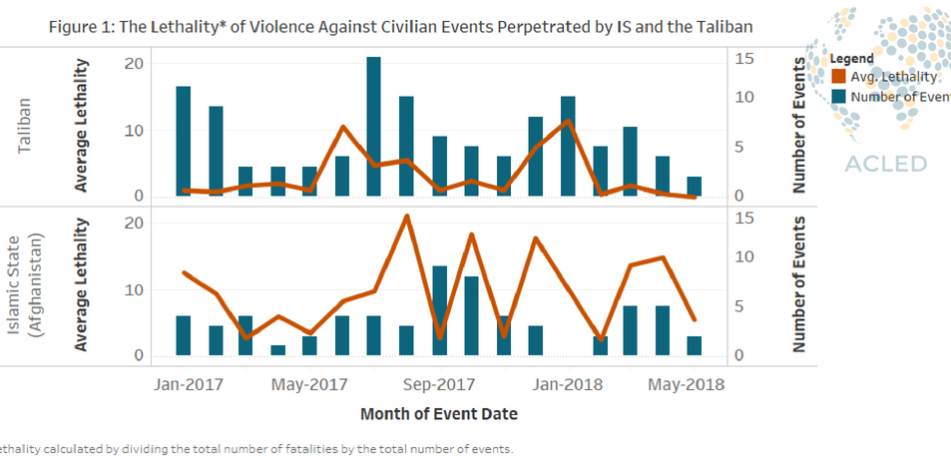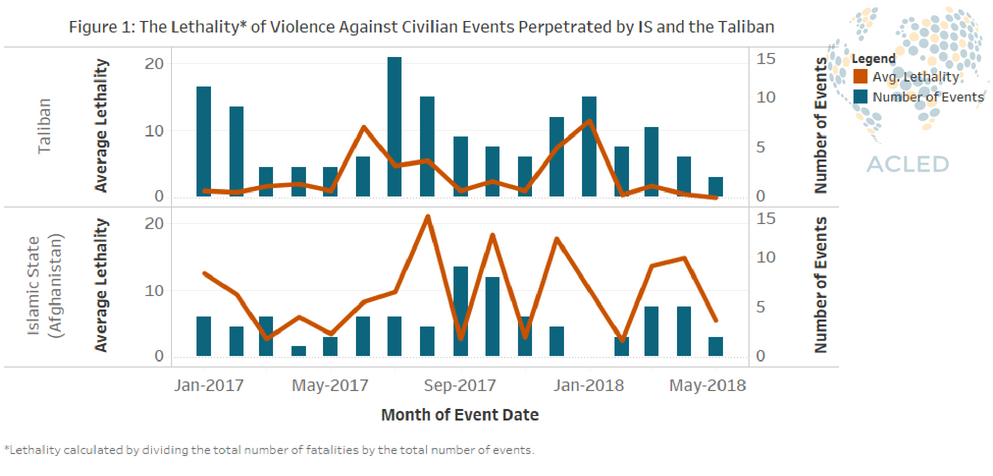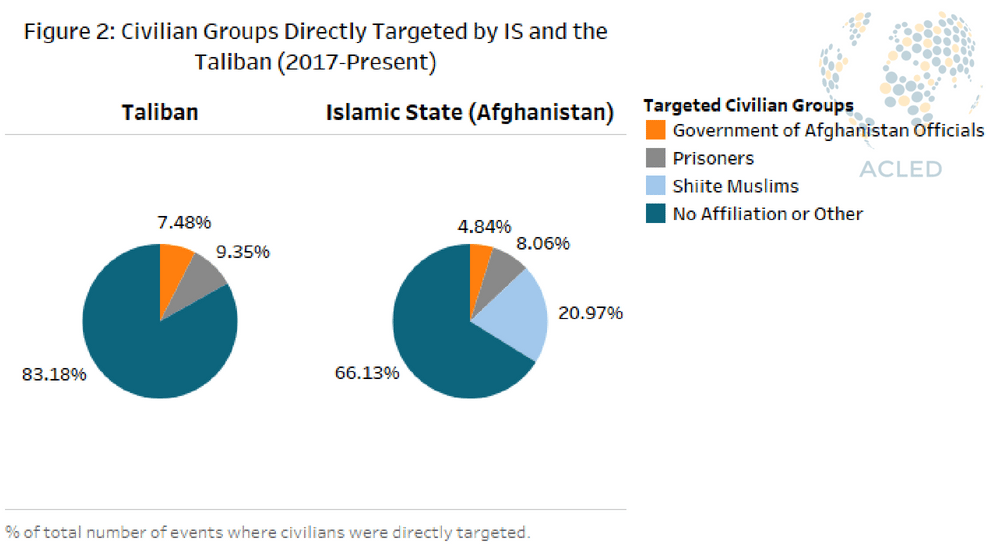Late last month in Kabul, an Islamic State (IS) suicide bomber detonated himself outside of a voter registration centre in the predominantly Shiite neighbourhood of Dasht-e-Barchi. At least 69 civilians were reportedly killed and another 120 were reportedly injured in the blast (Pajhwok, 23 April 2018). This was the latest in a series of major attacks directly targeting civilians in Afghanistan by both IS and the Taliban. Both groups, however, take a significantly different approach when targeting civilians, which may be explained by their respective geopolitical and religious perspectives.
With regard to geopolitics, both groups share the similar goal of seeking to destabilize the Afghan regime and replacing the current form of governance. However, the Taliban – on the contrary to the more transnational IS – has limited themselves almost exclusively to Afghanistan and has shown a willingness to embed themselves within the existing political framework. The Taliban, therefore, needs the Afghan population to view them as a legitimate alternative to the current government, making large-scale attacks against civilians counter-beneficial to their goals (Al Jazeera, 1 Nov 2015).
Figure 1 compares both the total number of, and lethality of, violence against civilian events carried out by both groups from January 2017 to present. While spikes in the number of major attacks can be attributed to both groups, IS attacks – although far fewer in number – result in a higher number of reported fatalities than the Taliban attacks. The Taliban, on the other hand, while engaging in more of these events, inflict fewer reported fatalities (e.g. attacks such as single executions, non-fatal kidnappings, etc.). Much of this discrepancy could be attributed to IS’ penchant for suicide bombings, which tend to result in more reported fatalities.
However, the higher lethality of IS attacks could also be a result of its desire to compete and more firmly establish itself into the political landscape, where Taliban has thus far been the dominant insurgent group. Indeed, civilian targeting can be a way in which secondary rebel groups — such as IS, who is not the dominant rebel group in this conflict landscape — can signal strength in a competitive environment (Raleigh, 2012).
The other main difference between IS and the Taliban is the severity of their hostility to Shiite Muslims. While both groups practice conservative forms of Sunni Islam and, as such, stand in opposition to Shiite Islam, the Wahhabi/Salafi branch followed by IS treats Shiites as complete non-believers. As seen in Figure 2, this has led IS to specifically target gatherings of Shiites (Hazaras included in the total) in Afghanistan, whereas the Taliban does not. Figure 2 also shows that the patterns of the overall targeting of civilians is quite similar between both groups, with the exception of the targeting of Shiites (in light blue). Both groups use prisoner executions and the killing of government workers as methods to establish themselves among the population and to destabilize the established system.
Made apparent by ongoing violent clashes between IS and the Taliban in several areas of the country, both groups are working towards the same thing, albeit slightly differently. While both groups target civilians, IS attacks tend to be more lethal and tend to be directed against the Shiite population at a higher rate than Taliban attacks. The Taliban, on the contrary, refrain from large-scale (mass fatality) attacks on civilians and try to establish themselves as a serious political player within the Afghan political framework. This competition could contribute to the strength of the Taliban’s recent spring offensive, codenamed Al Khandaq, which was launched on April 25th with the specific goal of targeting US forces and their allies, and gaining direct control of more districts in the country (VOA, 25 Apr 2018). With IS increasing its presence with high profile civilian attacks, the Taliban must reaffirm its role as the dominant non-government power in Afghanistan if it is to attain its desired geopolitical position.
Find an explanation of ACLED’s methodology for monitoring the conflict in Afghanistan here.
AnalysisAsiaCivilians At RiskConflict MonitoringFocus On MilitiasImprovised Explosive DevicesIslamic StateIslamist ViolencePolitical StabilityViolence Against Civilians







